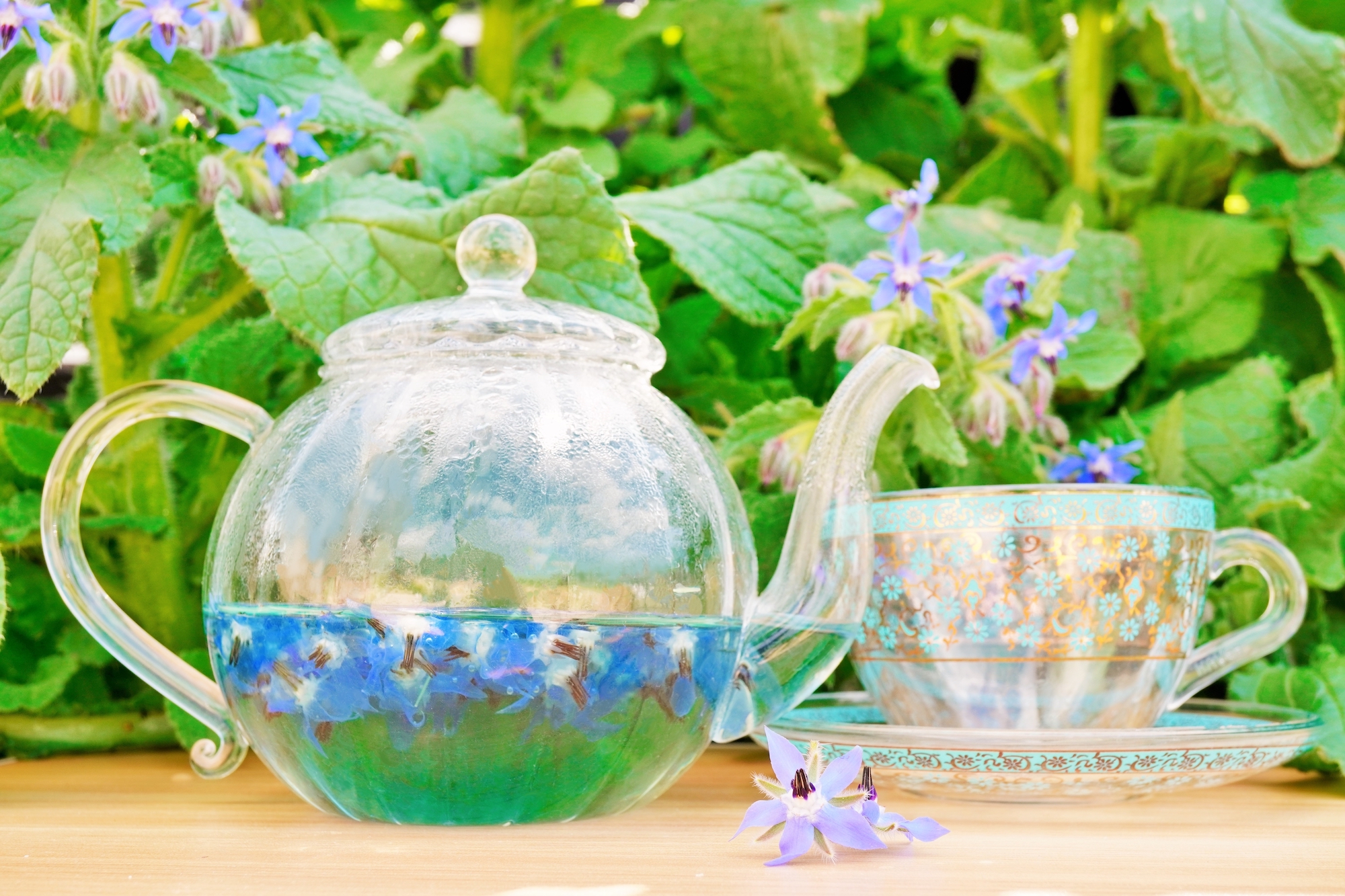Borage is one of our favorite herbs. It’s an edible annual herb with both culinary and medicinal uses. Plus, it’s beautiful with blue star-shaped flowers, and it’s famous for drawing butterflies, pollinators, and beneficial insects to the garden. Learn how to plant, grow, and care for borage.
About Borage
Borage, known botanically as Borago officinalis, is one of our top herbs for growing. While an annual, it readily self-seeds, appearing yearly like a perennial in your garden. Borage is not a finicky herb; it will grow in most gardens as long as the soil is well-draining.
The herb will grow in Zones 3 to 10, blooming from early summer to the first fall frost. It is shrubby with branching stems and grows 1 to 3 feet tall and wide. Its distinctive and prolific blue star-shaped flowers with black stamens in the center are covered with prickly white hairs. The sturdy, hollow stems and leaves are also covered with white hairs.
Other names for borage include bee bush and bee bread. It is a favorite plant of honeybees (with especially nutritious blue pollen), bumblebees, and small native bees, all of which aid pollination in the vegetable patch. At one time, beekeepers grew it to boost honey production. (A major source of nectar and pollen, it yields 200 pounds of honey per acre and 60-160 pounds of pollen!)
- Excellent pollinator: Plant borage, and you’ll see all sorts of native bees, beneficial insects, and butterflies. It’s one of the easiest pollinator-friendly flowers to grow! It attracts tiny parasitic braconid wasps, predatory nabid bugs, and hoverflies, which eat unwelcome garden pests. It is a host plant for lacewings that lay their eggs on, and the smell is thought to repel tomato hornworms.
- Companion planting: This herb is also a truly wonderful companion plant, especially for tomatoes, cabbage, strawberries, and squash. It helps reduce hornworm and cabbageworm damage. See our companion planting chart.
- Culinary herb: Borage is a versatile herb in the kitchen. When crushed, both the stems and the leaves give a cucumber scent and taste, and the flowers are also used as a garnish. Young leaves are a traditional ingredient in a Pimm’s Cup cocktail. (See more below.)
- Medicinal uses: The second part of the botanical name, officinalis, indicates that, historically, this plant was used for medicinal purposes. In 1597, the famous herbalist John Gerard even said that the syrup made from the flowers helps depression. This has been borne out in modern times as science has proven the active component of borage oil is an essential fatty acid, gamma-linolenic acid (GLA). Advocates now recommend starflower oil for autoimmune disorders, arthritis, eczema, and premenstrual stress.













